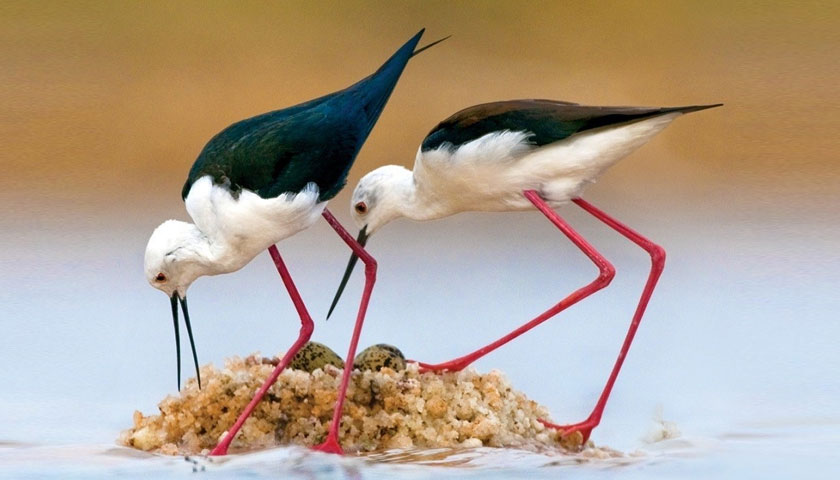Salt of the Earth Ltd. has implemented an extensive program to protect waterfowl of all species in its salt pools. The company also created a program to increase awareness of waterfowl protection. Since the program has started, the population of little terns (Sterna albifrons) has more than tripled.
Salt of the Earth’s current environmental initiative is being conducted in collaboration with multiple nature conservation bodies in Israel, including the Israel Nature and Parks Authority and the Society for the Protection of Nature in Israel. The company already has invested more than NIS1 million in its waterfowl protection efforts.
Salt of the Earth produces salt in a natural process using solar and wind energy, leaving a minimal ecological footprint.
“Our vision is to develop and execute a more aggressive sustainability strategy, and to operate as part of the fabric of the natural living environment,” declares Yaron Silash, CEO of Salt of the Earth. “Our concern for the waterfowl compelled us to allocate the necessary resources to protect them and to create a natural environment surrounding the pond area, thereby contributing to the significant increase in their population.”
The salt pools based in Atlit and Eilat offer a unique ecological habitat for many species of waterfowl, including migratory birds that depend on the ponds for their existence. Millions of birds traverse Israel each year, especially during spring and autumn. For many of these birds, the primary breeding ground is in Israel and is the only place where they can reproduce.
Salt of the Earth designated a specific island of nature reserve in the heart of the salt ponds. Fences were constructed to deter predators from infiltrating the nesting areas. This ground serves as a protected nesting colony for hundreds of endangered seagulls and little terns that previously had been in real danger of extinction. Threats to the birds came from predators such as jackals, foxes, and dogs able to access their previous nesting areas.
As a side benefit, the protected islands also solved serious flooding problems caused by rising water levels in the salt ponds, which took a severe toll upon the population of the little terns. Before these efforts, the terns’ population had dwindled to a perilous low of just 300 pairs.
Today, the nesting areas nurtured by Salt of the Earth have increased, allowing the population of little terns to experience its impressive growth. Joining the colony are droves of flamingos, previously not regular visitors to Israel. The pink aquatic birds can be seen wading in the pools throughout the year. The company has installed observation cameras in nesting areas for continued research and monitoring.
“We have the privilege of hosting an exceptional range of waterfowl in the salt ponds, providing them with a protected and food-rich environment that enables them to live and prosper,” says Revital Ben Shachar, Director of Marketing for Salt of the Earth. “We chose to create a program that introduces the public the waterfowl, and to remind us to enjoy the beauty of nature and preserve it.”
Within the framework of the project, bird-watching tours are being offered for the first time under the guidance of the Society for the Protection of Nature in Israel.
Salt of the Earth is simultaneously embarking on a widespread campaign to raise public awareness of the importance of protecting water birds. This campaign will run in cooperation with the Society for the Protection of Nature in Israel and will encompass the launch of a limited-edition salt shakers, as well as a display of photography by Yossi Eshbol featuring water fowl bathing in the salt pools of Atlit.
